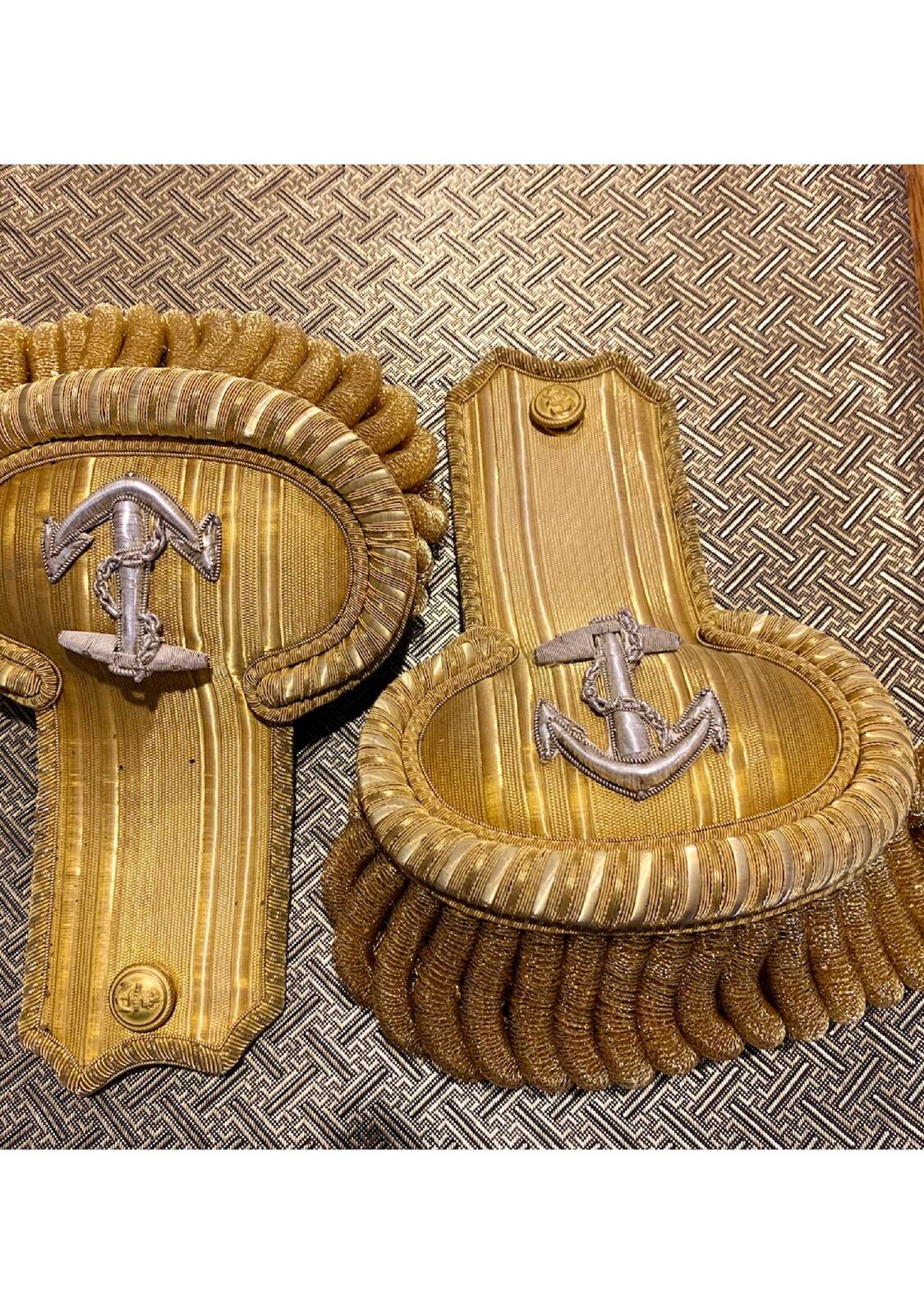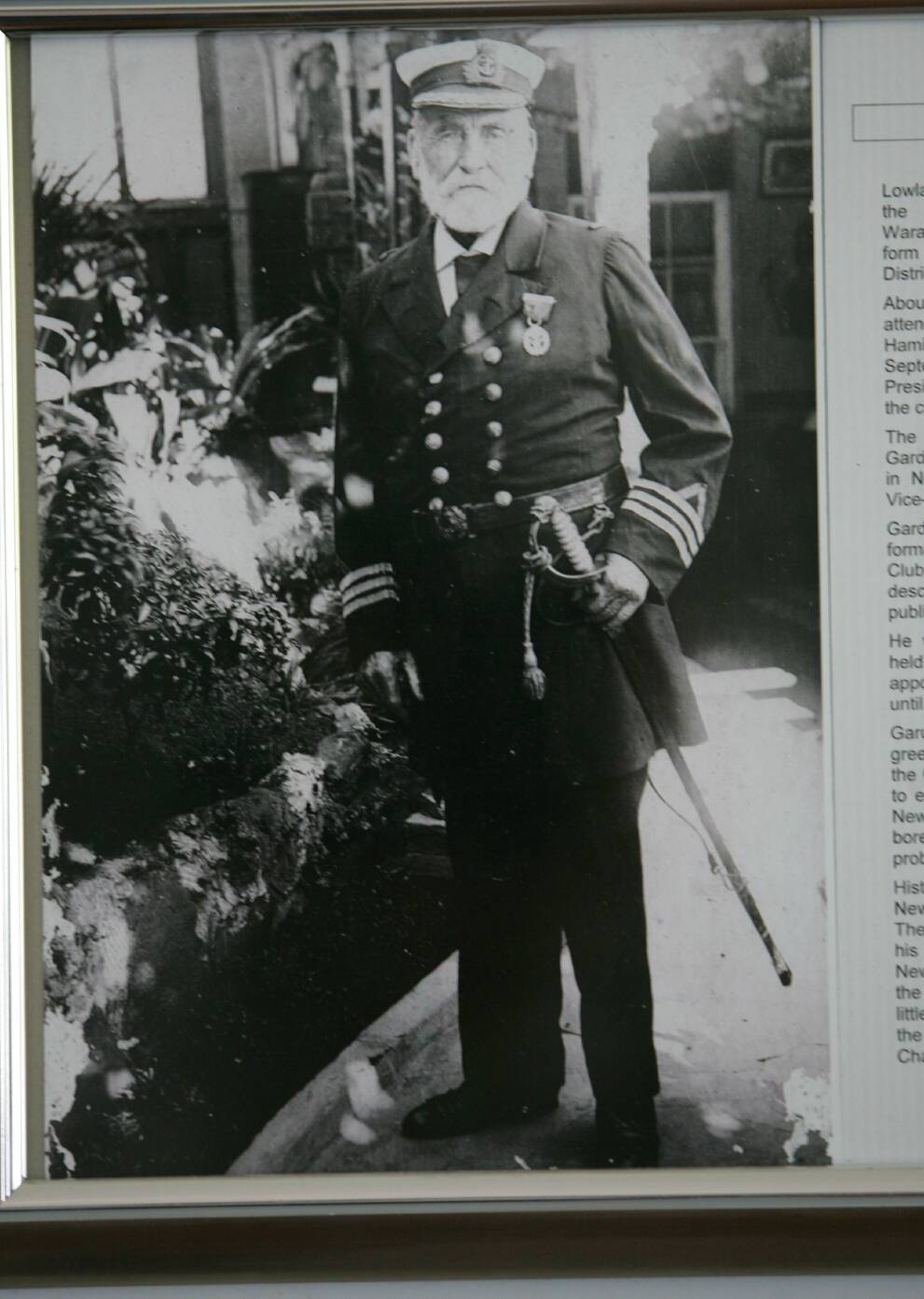
TODAY's yarn is about one of life's little mysteries seeking a solution.
It concerns some orphan military decorations. These prize insignias of rank were discarded, but then saved, more than 70 years ago during a Newcastle house clearing.
Officially called epaulettes (pictured), they are ornamental shoulder pieces worn on a uniform showing an officer's rank and indicating bravery.
Later they became a fashion statement, something to be worn only at official parades.
There was another possible reason, however.
In the USA, marine officers wore similar very fancy epaulettes on their special dress uniforms until 1922.
There was a fear that the fancy decorations might single out the wearer's importance to an enemy sniper in wartime.
The 'lost' twin epaulettes at the heart of today's story are courtesy of Chris Ford, of Newcastle, a former NBN TV reporter and now entrepreneur.
At a chance meeting with Ford recently, he explained how the mystery epaulettes came into his possession a while ago.
Later, he sent me a few photo snaps to illustrate his strange family story.
"They were found by my father while clearing a house on The Hill in the post-war years, I'm guessing the 1946/47 period," Ford says.
"On coming across these uniform epaulettes and some other items, he asked the house owner what he wanted to do with them and he was told, 'Take them yourself. They're no use to me'.
"So he did and the family has kept them ever since. I'm now curious who they might have once belonged to, or what the story behind them might be.
"I have no particular interest in them and I might even eventually donate them to the wardrobe department of a local theatrical group to help in staging plays requiring someone wearing military clothing."
The eye-catching epaulettes, now slightly tarnished with age, are a real talking point as to their origin.
They definitely belong to a naval uniform as they each feature an anchor and chain.
Accompanying them are seven brass buttons displaying anchors surmounted by a crown.
As well, there is a tin box and a well-worn black pouch topped with a coat of arms bearing the name in gold lettering of the original Sydney naval outfitters.
The ceremonial, dare I say it, is excessively showy. Epaulettes are not unique, however.
A little research soon turned up a pair of naval officer's full dress epaulettes, apparently identical, dating from 1909-1910 on display in Canberra in the Australian War Memorial's First World War Gallery.

Consisting of gold wire, gold lace, gilded brass, silk and leather, the epaulettes (French for 'little shoulder') once belonged to a lieutenant in the Royal Navy Reserve and were worn for parades when full dress uniform was to be worn.
Now the real mystery begins. Who did the Newcastle ones once belong to?
As the find was originally made in the 1940s in a house of The Hill, in inner-Newcastle, my first hunch was they might have belonged to a prominent Newcastle military man like Brigadier James Montague Corlette who once lived in that area.
Corlette served at Gallipoli in World War I and after the war returned to the Hunter District Water Board where he was chief engineer from 1925-42.
He even designed the Tomago Sandbeds water supply scheme.
But "Monty' was a soldier, not a sailor, and lived until 1969.
So it seems highly unlikely he would have not noticed mislaying any prize dress uniform apparel.
So here, I admit we may never really know who the mystery epaulettes once belonged to after all this time.
But I do humbly submit another possible candidate, who has long been associated with Newcastle.
My contender is Commander Frank Gardner VD, RANR (1841- 1926) a famous Lower Hunter citizen.
He was once president of the City (of Newcastle) Bowling Club.
In fact, he's regarded as the district's "father of bowls", but that is only one of his many claims to fame.
The English-born Gardner was very active in community affairs, especially in the local Naval Brigade Reserve.
He lived in a terrace house Church Street, The Hill, and died just short of 85 years in November 1926.
His wife had pre-deceased him.
Gardner came to Australia as a ship's mate on the clipper 'Lightning'. Then in 1862 he came to Newcastle.
Gardner joined the Newcastle Naval Brigade at Fort Scratchley, finally rising to the rank of commander.
The three known, but undated, Newcastle photographs of Gardner in naval uniform though don't show him with any epaulettes.
He did, however, dedicate a great slice of his busy life to the brigade/reserve, retiring after 40 years of service becoming one of the oldest officers in the Australian Naval Reserve.
But wait, there's more! Frank Gardner went to sea with Britain's Royal Navy at age 14 years after the death of his father.
He voyaged to the Crimean Peninsula and the battlefields of Sebastopol and was then engaged in taking forts in China during the Second Opium War.
He left the Royal Navy in 1860 to join the merchant marine and make a voyage to Savannah in Georgia before joining the Confederate forces in the American Civil War.
Gardner then spent time blockade-running on a steamer from Liverpool, England, to Savannah in the southern USA helping deliver tobacco cargoes and iron for railway tracks.
He also ran guns to the South before coming to Australia, then Newcastle where he set up a bonded store, which then burnt to the ground and was uninsured.
Probably bearing this in mind, Gardner became the honorary superintendent of the volunteer Newcastle fire brigade from 1882 before his retirement when a permanent fire-fighting force came into existence 28 years later.
Gardner was also a founder of the Newcastle Sailors Home and helped form the local Shipwreck Relief Society.
He established an insurance and auctioneering business and was said to have helped lay out the suburb of Adamstown.
He was also exceedingly generous, especially to the Anglican Church.
Gardner is credited with paying the full cost of the brick walls and entrance to Newcastle's Christ Church Cathedral on Church Street and also paying for the marble altar of the Cathedral's Warriors Chapel.
Another lasting legacy was paying anonymously for the prominent Great War/Anzac memorial in front of Hunter Street's old grand sandstone post office.
Known now as the Gardner Memorial, it was unveiled in late 1916 and is regarded as unique, being Australia's first Great War (1914-18) memorial to incorporate a soldier-statue.
Now, I don't know about you, dear reader, but I'd really like to believe the mystery epaulettes deserve to have once been owned by Frank Gardner who, after his death, was praised for being one of Newcastle's most outstanding and valued citizens.
WHAT DO YOU THINK? We've made it a whole lot easier for you to have your say. Our new comment platform requires only one log-in to access articles and to join the discussion on the Newcastle Herald website. Find out how to register so you can enjoy civil, friendly and engaging discussions. Sign up for a subscription here.
.







